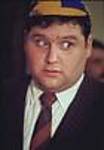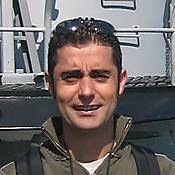Go to modelshipwrights.com for the current dynamic site!
1⁄350KANPAI—Battleship Hyuga 1945
The Scene…
By the spring of 1945 the Imperial Japanese Navy had largely abandoned the defense of Southeast Asia and brought what large ships it could back to the Home Islands. In March 1945 the battleship Hyuga was anchored near Kure and sustained damage from an American carrier strike. Afterwards, she was towed to a small bay nearby and served as part of a newly-formed coastal force.
On 24 July 1945 she was again subjected to carrier strikes and received a substantial amount of damage, particularly to the stem and upper bridge works. Reduced to a sinking condition, Hyuga gradually settled onto the bottom of the anchorage. Within days, her secondary and anti-aircraft armaments were taken ashore and the wreck completely abandoned. It did not take long for the elements to ravage the wreck, swiftly rusting the burned and exposed steel from the damaged areas.
The Model…
The model is adapted from the Fujimi 1:350 Ise kit. Despite the high waterline, the model’s hull is intact—a carefully cut hole in the water base allowed the model to sit snugly without resorting to tricky cutting of plastic. Since I want to build a full-battleship version of this class, I scratchbuilt the after two turrets to save the kit ones, in case a full battleship version kit will not appear in 1:350. The wreck also depicts the ship after the large swivel catapults had been removed from the class.
The Diorama…
This scene enabled a depiction of rustic colors not normally used in ship modeling, an unusual mix of hues that even attracted the attention of U. S. Navy combat artist Standish Backus after the war. Thanks to the recent petroleum debacle in the Gulf of Mexico, I could review color footage of a large oil spill and that assisted in the oil slick depiction in this scene. I used a mix of raw umber tube paint and flat black. First, the initial application was allowed to partially dry then I worked on sections with a wet brush to thin some layers, giving the oil a sense of depth. The rest of the water base is brushed artist’s gel over painted with blue.


































